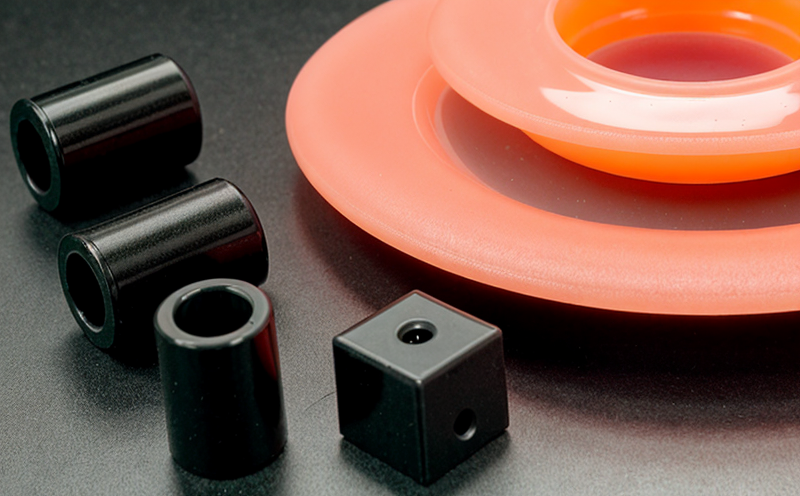BS EN ISO 178 Flexural Properties Testing of Sports Plastic Materials
The testing of flexural properties as per BS EN ISO 178 is a critical process for ensuring the integrity and performance of sports plastic materials. This standard provides detailed procedures to measure the flexural strength, modulus of elasticity, and other mechanical properties that are essential in determining the reliability and durability of plastics used in various sporting equipment.
The flexural properties testing involves subjecting a sample of the plastic material to bending stress until it fractures or reaches its maximum capacity. The test helps manufacturers assess how their products will perform under real-world conditions, ensuring they meet regulatory standards and customer expectations. This service is particularly important for sectors where safety and performance are paramount, such as sports equipment manufacturing.
For quality managers, compliance officers, R&D engineers, and procurement professionals involved in the development of sports plastic materials, this testing ensures that the products not only comply with international standards but also meet the specific requirements set by governing bodies. By adhering to BS EN ISO 178, manufacturers can enhance their reputation for producing high-quality, safe, and reliable sporting goods.
The testing process typically involves preparing samples according to specified dimensions and tolerances outlined in the standard. The specimens are then placed on a testing machine designed specifically for flexural testing. Once positioned, external forces are applied gradually until failure occurs. Throughout this process, precise measurements of force, displacement, and strain are recorded.
Understanding the results from these tests provides valuable insights into the mechanical behavior of sports plastic materials under bending stress. Factors like modulus of elasticity, which indicates stiffness, and flexural strength, which shows resistance to fracture, play crucial roles in optimizing product design and material selection. These metrics help engineers make informed decisions about improving safety features or enhancing performance attributes.
Compliance with BS EN ISO 178 ensures that all aspects of the testing procedure align with internationally recognized practices. This consistency across different laboratories worldwide fosters trust among stakeholders involved in the supply chain, from raw material suppliers to end users purchasing finished products.
In summary, conducting flexural properties tests according to BS EN ISO 178 is not just a regulatory requirement but also an essential step towards producing superior quality sports plastic materials. It enables manufacturers to meet stringent performance standards while maintaining safety and reliability throughout the manufacturing process.
Why It Matters
The importance of flexural properties testing cannot be overstated, especially within the context of sports equipment manufacturing where materials must withstand rigorous use. Ensuring that these plastics can endure repeated bending without compromising their structural integrity is vital for both consumer safety and product longevity.
Failures in plastic components due to poor quality or improper design could lead to accidents during play activities, potentially resulting in injuries. Therefore, adhering strictly to BS EN ISO 178 ensures that any potential issues are identified early on through thorough testing before reaching the market. This proactive approach protects consumers from harm and enhances brand reputation.
From an operational perspective, consistent adherence to industry standards like this one helps streamline production processes by providing clear guidelines for material selection and processing methods. It also facilitates easier communication between various departments within a company—such as R&D, manufacturing, quality assurance—and external partners such as suppliers and regulatory bodies.
The ability to consistently achieve compliant results contributes significantly to maintaining high standards of excellence across the entire supply chain. By doing so, companies can build lasting relationships with customers who appreciate not only the performance but also the peace of mind that comes from knowing they are using products made from tested materials.
Applied Standards
| Standard | Description |
|---|---|
| BS EN ISO 178:2003 | This standard specifies the method for determining flexural properties of plastics, including flexural strength and modulus of elasticity. It applies to specimens with dimensions specified in the standard. |
| ASTM D6272-19 | Equivalent American Standard providing similar requirements but tailored specifically towards thermosetting resins. |
The application of these standards ensures uniformity and accuracy in testing procedures across different laboratories, thereby facilitating easier interpretation of results. Compliance with such internationally recognized guidelines also strengthens a company’s position in global markets by demonstrating commitment to quality assurance practices.
International Acceptance and Recognition
The acceptance and recognition of BS EN ISO 178 flexural properties testing are widely acknowledged within the plastics industry due to its rigorous methodology and reliability. Laboratories around the world that adhere strictly to this standard enjoy high levels of trust from clients seeking accurate and consistent test results.
Manufacturers involved in international trade benefit significantly by aligning their quality control measures with internationally accepted standards like BS EN ISO 178. This alignment fosters better communication between trading partners, reduces misunderstandings regarding specifications, and helps ensure that products meet the expectations of customers globally.
Certification bodies often require compliance with these standards as part of their certification processes for various types of plastics used in manufacturing sports equipment. This requirement adds further weight to the importance placed on accurate testing conducted according to BS EN ISO 178.
In conclusion, the widespread adoption and acceptance of this standard underscore its significance within the broader framework of quality assurance practices employed by industries reliant upon polymer materials.





